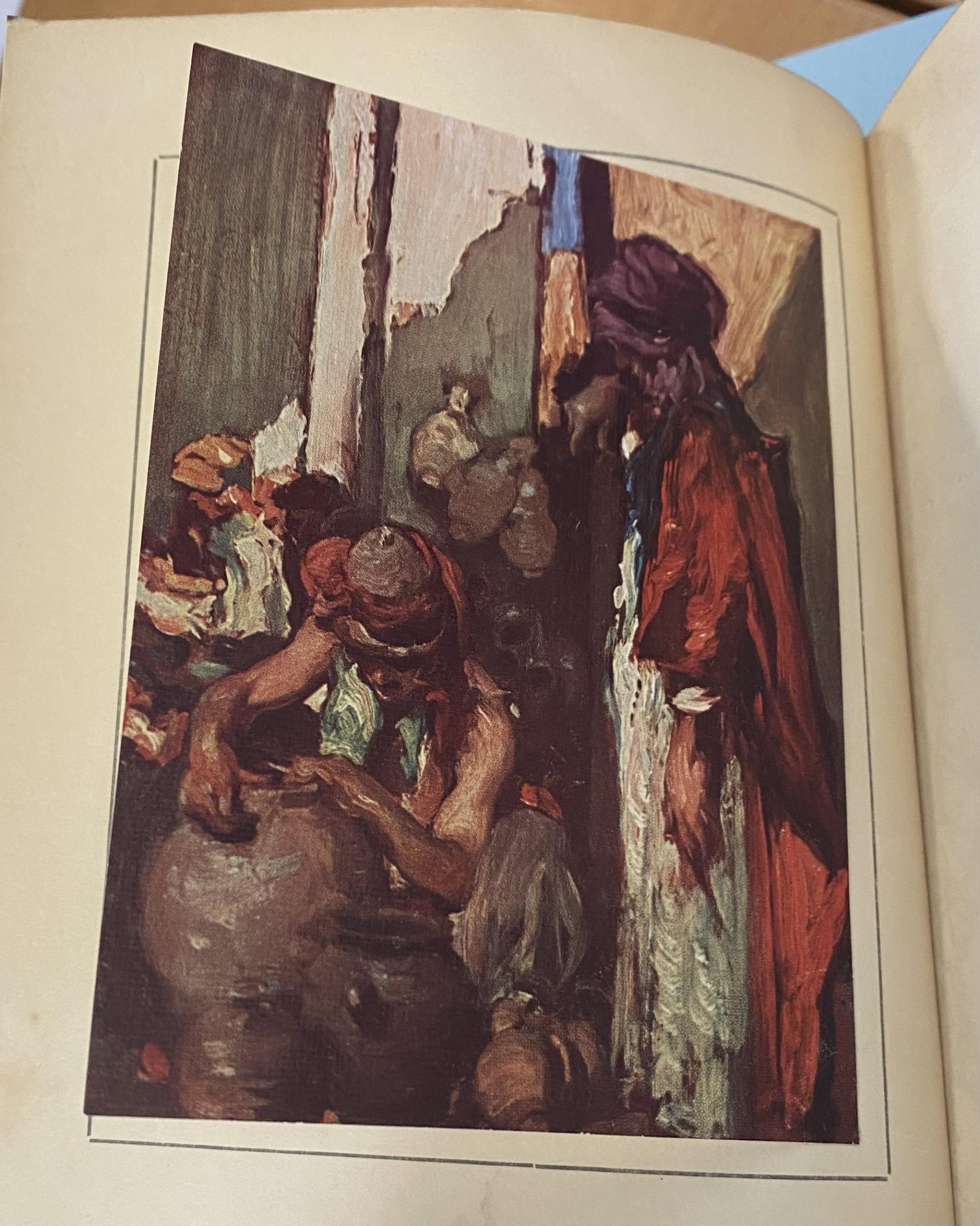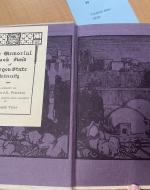Created by Julia Wood on Tue, 05/23/2023 - 19:01
Description:
Frank Brangwyn:
Rubáiyát of Omar Khayyám, London: Gibbings & Co, 1906
5 colour illustrations, cover and title page by Brangwyn
Between 1890-1948 Brangywn produced original illustrations for over 80 books.
Originally, he did his illustrations and paintings for the money. It was a good way to make a livable income and it wasn't too much work for him. Many early works were produced cheaply to save him money. As his reputation got bigger, so did his interest in producing quality works of art. There turned out to be multiple reasons that Brangwyn chose to continue his overbearing load of commission work. Not only was Brangwyn like most of us, constantly working for his next dollar, but it is said that Brangwyn “couldn’t refuse friends”. He didn’t want to let people down or lose an opportunity to continue his legacy or reputation.
Brangwyn has a very wide variety of art styles and mediums ranging from paper and pencil to layered oil paintings to the occasional stained glass piece. His website is set up to showcase these works and is organized by genre or medium however, it was hard to find information about the images in this edition of The Rubáiyát. I was able to find a couple of the illustrations scattered in his works page but, there were a few missing. Looking through online sources, there wasn't much information about this edition, I could only find a few sources selling it, but nothing with information about it. There is a similar edition on The Rubáiyát website, by the same publisher, with the same illustrations, just with a different cover. Within the actual copy, there is no information about the illustrations, so any sources I could find about the edition, was also lacking in insight into these illustrations. My biggest question was, Why does Brangwyn not proudly claim these illustrations? Why is there no information about these paintings? Without much specific information, it is hard to tell if the illustrations in the book at pieces of larger paintings or, if they are prints of the small, single scene paintings.
There was a part that I was a bit confused, the front section (sketch of town) on the front and back cover pages, and the stamp that frames each page (green or purple vines with grapes) are unspecified in any reports I can find about this version of The Rubáiyát, there was no artist given for them anywhere in the book. On Brangwyn’s website, there is nothing in his history or projects that pointed towards him doing the stamping as well as the paintings. On The website for The Rubáiyát there is no specification as to who did the stamps or the cover pages. I assume that the lack of specification means that Frank Brangwyn was responsible for those illustrations as well. Considering Frank’s background in mixed media arts, it is not surprising to see his style carried over into other styles of artwork. Frank's natural designs and whimsical styles can be seen all throughout this version of the collection.
Citations:
Home, www.frankbrangwyn.org/.
“The Rubaiyat of Omar Khayyam: 1917 T.N. Foulis Frank Brangwyn Edition.” The Rubaiyat of Omar Khayyam - 1917 T.N. Foulis Frank Brangwyn Edition, www.therubaiyatofomarkhayyam.com/editions/1917-foulis-brangwyn/.
Copyright:
Associated Place(s)
Part of Group:
Featured in Exhibit:
Artist:
- Frank Brangwyn




